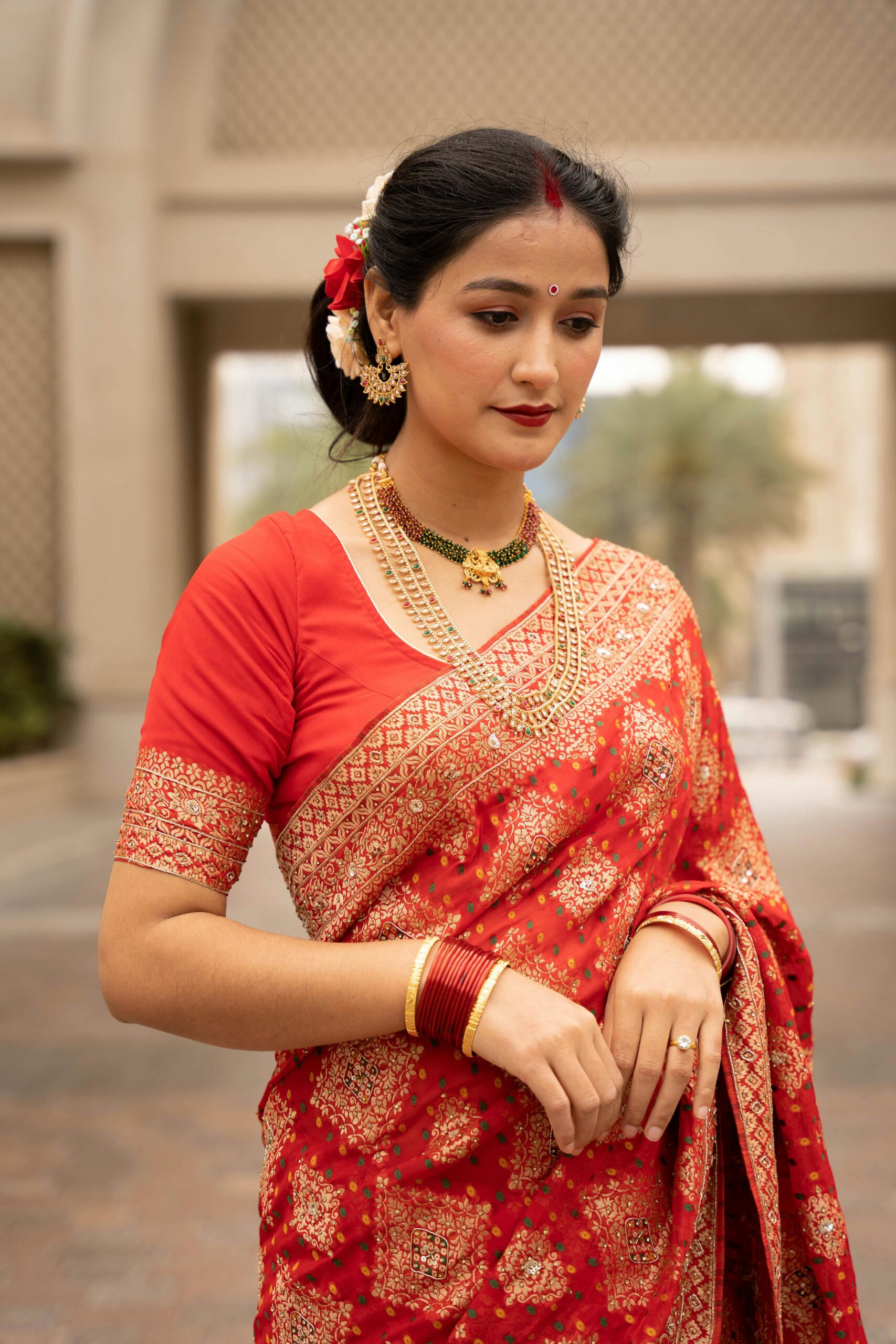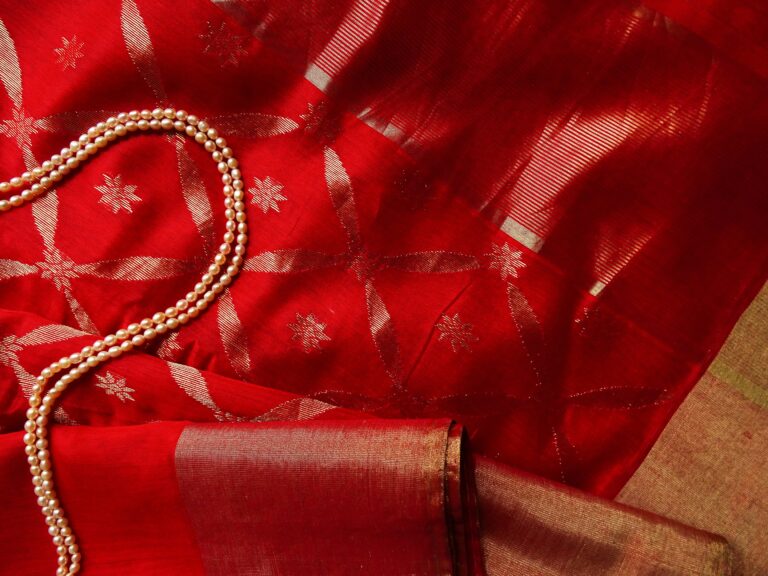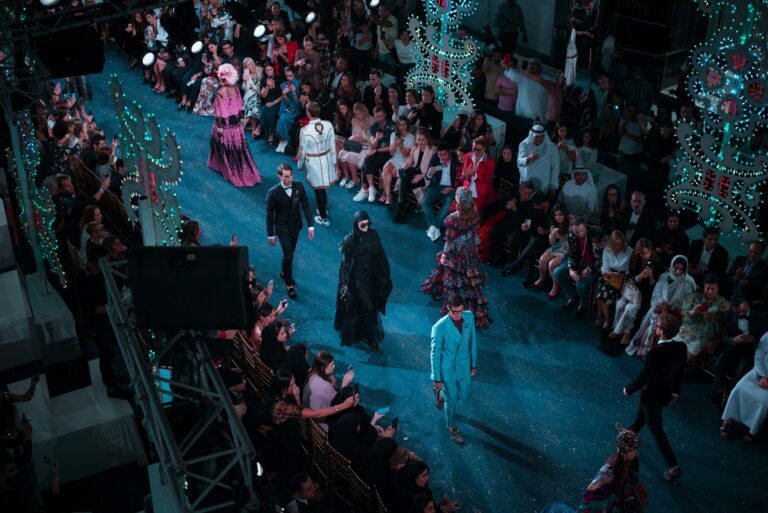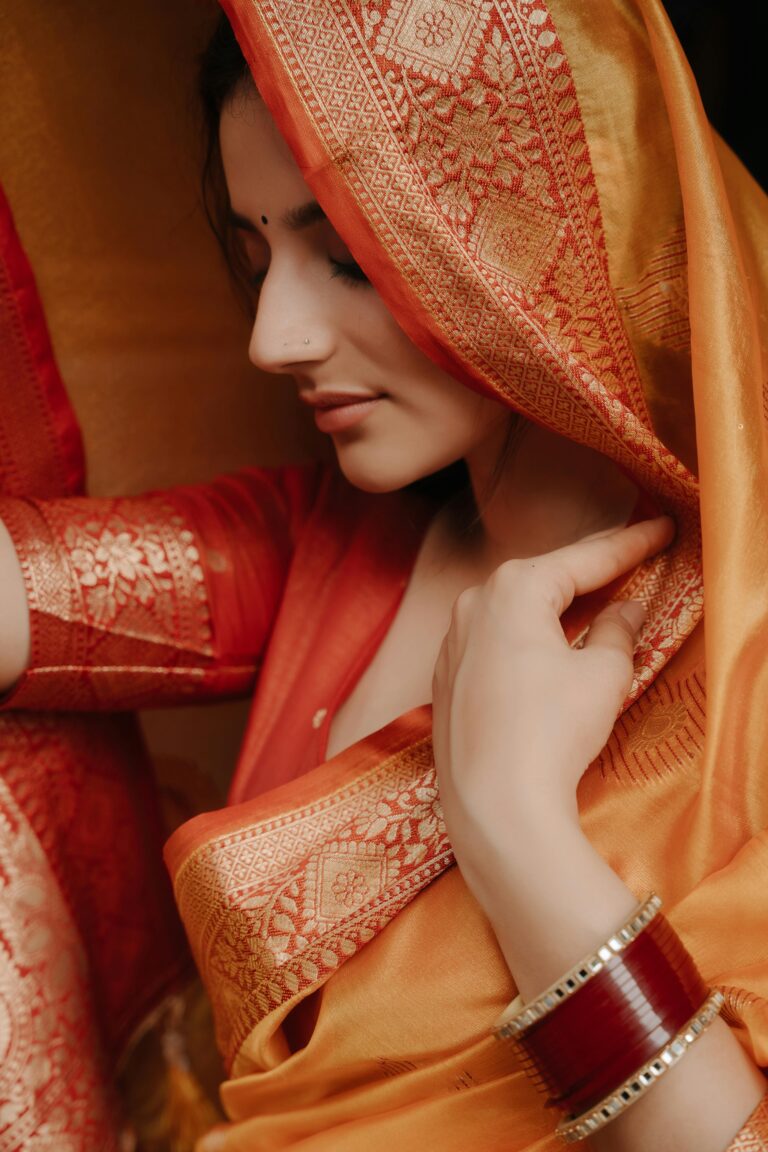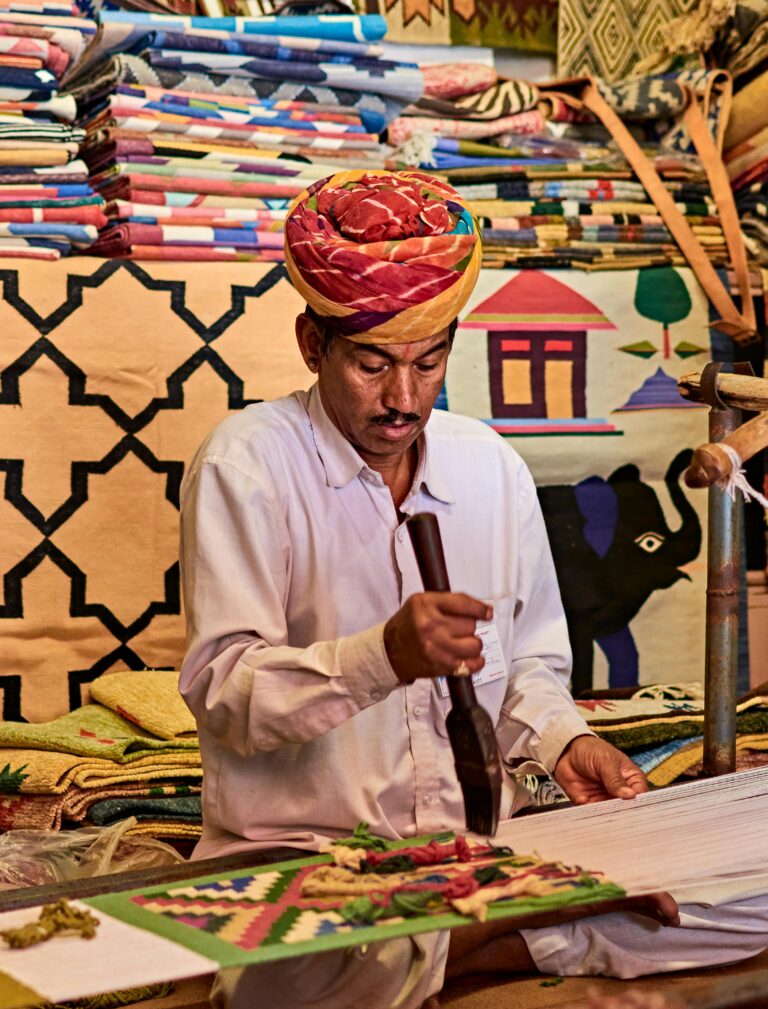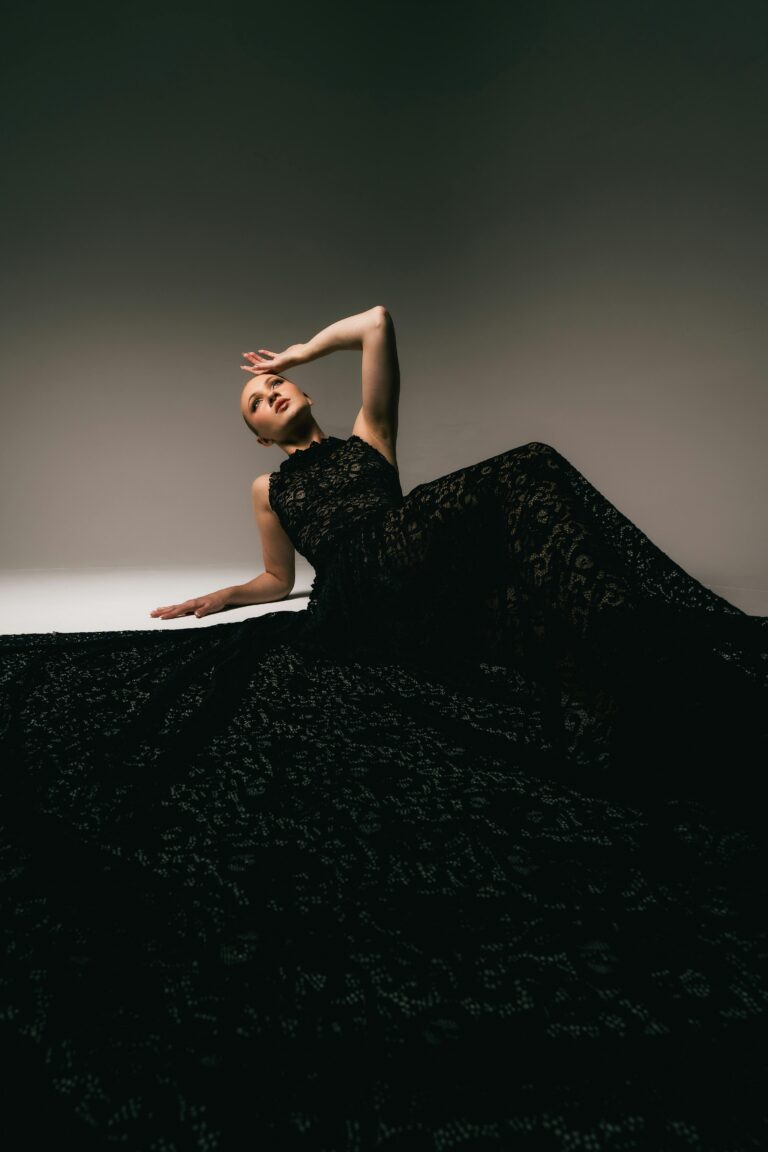The Saree Moves Like Grace, Not Just a Trace of Lace
In a world obsessed with standard sizes and ‘perfect’ bodies, there is one garment that subverts them all. A saree is not just a garment; it is an emotion. It is a single, unbroken line of fabric that has the power to transform you into anything you want, simply by changing the drape, the fabric, and the colour. It is a continuation of you. It is, perhaps, the most intelligent garment ever conceived.
This intelligence lies in its architecture. A saree is a form without stitching, pure potential waiting for a body to give it shape. The act of draping is an intimate, ritualistic conversation between the wearer’s hands and the fabric. The wearer becomes the architect, designing a structure that must hold her body with grace.
This act of draping is a language with countless regional dialects. Think of the thick, dhoti-style Nauvari of Maharashtra, crafted for warrior women with swords and bangles. Or the soft, white Mundum Neriyathum of Kerala, adorning the body for temple visits. The Gujarati front pallu exists to showcase intricate design, making the fabric itself the central piece. In Assam, the Mekhala Chador, with its separate skirt and wrap, transforms a saree into flowing pieces that celebrate the rhythm of the land and the pulse of festivity.
Crucially, because it is an unstitched plane of fabric, it subverts the very idea of a standard size or a perfect body. There is no ideal saree body. The fabric flows and embraces curves and edges alike, playing and flirting with the wearer’s form. It allows the wearer to emphasize or soften aspects of her body at will, never conforming to a rigid standard.
Adorning the reality of the person within it, the saree is, at its core, a vessel. It gains its emotional weight from the meaning you pour into it. The exact same shape can communicate the peak of joy and the depth of grief. For a wedding, a saree is crisp, shining with heavy embellishments and vibrant reds and golds that radiate celebration. In mourning, it softens. Lighter fabrics in simple white or muted colours, with restrained draping, express introspection and loss.
This fluidity is the source of its immortality. The saree is one of the oldest living garments, flourishing from the time of the Indus Valley Civilization, its existence documented by the ancient, draped figures of Mohenjo-Daro and recorded in the sacred texts of the Vedas. It has no fixed points, no shoulder pads from the 80s, no low-rise waist from the 2000s. It cannot be pinned to a single moment in time. It is like water; it can take any shape and is always useful. It is the feeling of grace, femininity, and softness that young girls wait for, the chance to bring the woman outside from their hearts.
And this ancient garment is not frozen in time. Women today are speaking its language with a new, global accent, pairing it with boots to show culture with a touch of rock. They put the reins in their hands, making the saree dance with their body and style. On the global stage, designers are creating pre-draped saree-gowns, and global figures and models are showcasing its genius on platforms like the Met Gala and major cultural events, giving the garment a new chapter. When Gucci designed its first-ever saree for Alia Bhatt, and Hermes launched its rare, limited-edition silk line, it was a clear sign: the saree is global. This is not a sacrifice of tradition. It is evolution.
This sense of a living story is most potent when a saree is passed down. The first saree I ever wore was my mother’s. In that moment, there was a tinge of happiness, a feeling of having grown up. When a woman wears a handed-down saree, she is not just wearing a garment; she is on an emotional journey, carrying the weight and wisdom of her mother’s or grandmother’s stories in every drape. A saree is an intelligent garment, like a genie fulfilling your wishes. Because it rejects standard size and adapts to every woman, its genius is eternal. It moves with you, not around you, and that’s what makes it timeless.
